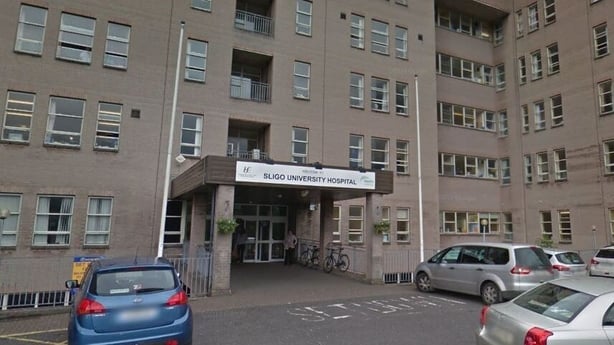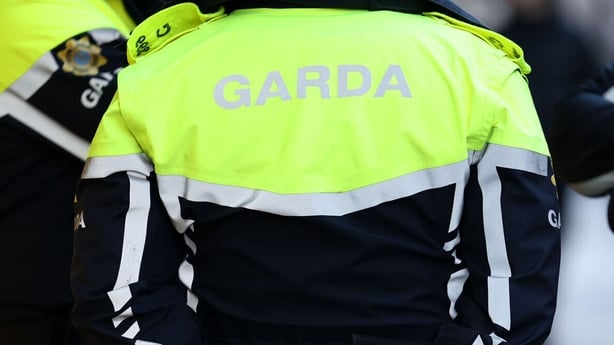A jury at Carrick-on-Shannon Coroner's Court has delivered an open verdict into the death of Liam Farrell, an 87-year-old man from Co Leitrim who died almost five years ago.
The jury of five woman and three men extended its deepest sympathies to the Farrell family and they recommended a forensic pathologist attend designated crime scenes going forward.
Brendan Farrell made a passionate appeal on behalf of his family for anyone who "may have information big or small" about their father’s death to come forward.
Solicitor for the family Frank Buttimer said an open verdict "means the jury cannot be satisfied as to the actual circumstances surrounding the death of the late Mr Farrell".

"The concern of the family is to ascertain the truth in relation to the death of their late father," Mr Buttimer added.
Mr Farrell lived alone and, as was his routine, he went to two pubs in his local village Rooskey on the night of Saturday, 12 January 2020.
Witnesses at the inquest recalled a pleasant, kind man and remarked how he was in good form when he left to walk home.
On the following Sunday afternoon, Mr Farrell was found by his daughter slumped on his back at the back door of his home.
He was covered in blood, his shoes and socks were removed, his watch was broken and he had bruising to his left eye and his feet.
Resuscitation efforts were not successful.
Gardaí designated it a crime scene.
Mr Farrell's body was removed to Sligo University Hospital for a post-mortem examination.
Consultant Pathologist Professor Paul Hartel, who performed the autopsy, observed that Mr Farrell died of a heart attack related to severe coronary heart disease.
Prof Hartel stated he was not informed that Mr Farrell's body had been found in suspicious circumstances and that there was a crime scene at the time of the autopsy.
He said that if he had known there was a crime scene, he would have refused to do the autopsy as it should have been "the duty of a forensic pathologist".
In respect of the injuries that Mr Farrell sustained, Mr Hartel said it "would be inappropriate for me to speculate how those injuries were obtained".
"I wouldn’t put that kind of conjecture in my report," he said.

Professor Hartel explained that any instance where a body is found in a suspicious state and where a garda investigation may be needed is handled by the state pathologist.
'Can't say for certain'
Chief State Pathologist Dr Linda Mulligan reviewed the autopsy report following a request from An Garda Síochána.
Professor Mulligan had access to images and information that Prof Hartel did not have on 13 January.
She agreed with Prof Hartel that the ultimate medical cause of death which was a heart attack related to severe coronary heart disease.
Dr Mulligan said there were two possible scenarios: either Mr Farrell suffered a heart attack and in a confused state may have fallen or there was another party involved that caused a stressed induced heart attack.
She added that the injuries were not inconsistent with either option.
Dr Mulligan said due to the pattern of injuries the involvement of another party could not be ruled out.
She added they favoured the first scenario at the Office of the State Pathologist.
"You can’t say for certain," she said.
The Farrell family appointed former state pathologist for Northern Ireland Professor Jack Crane to review the autopsy.
He was critical of the initial autopsy report and said that he was of the view that Mr Farrell’s injuries were consistent with an assault.
Prof Hartel took contention with the report from Prof Crane, particularly that his autopsy report "was inadequate".
All three professors present at the inquest agreed there was evidence Mr Farrell suffered a heart attack a number of hours before his death.
Professor Crane said the injuries in themselves were not serious enough to cause death, but said it was likely they added to an already compromised cardiac position.
"My opinion is this man was confronted by an intruder outside of his home and he was struck in the face," he said.
"It would appear he attempted to make a way back into his home," he added.
When questioned by Patrick McCullough, barrister for the Farrell family, Prof Crane said the "eye injury was typical to a punch on the face".
Witnesses who were in the local pubs in Rooskey village, which Mr Farrell visited on Saturday night, provided depositions.
'Pleasant and honest man'
The owner of Reynold’s Pub, Peter Reynolds, remarked how Mr Farrell "was in good form".
He described him as "a very nice, pleasant and honest man", adding that he "was in perfect shape" when he left the pub.
The proprietor of The Weir Pub, Anne Vaughan, said that a small, stalky man, who was dressed in a dark suit and who she had never seen before, was talking to Mr Farrell that night.
She thought the unidentified man may have followed Mr Farrell when he left the pub.
Local taxi driver Noel Mahon was the last person to see Mr Farrell outside the pub.
He remarked there was nothing unusual about Mr Farrell’s routine that night.
He recalled how Mr Farrell was orientated and walked home on the correct side of the road.
More than 30 people provided depositions during the inquest.

Conflicting evidence was heard at the inquest regarding footprints on the front lawn of Mr Farrell’s home.
His family members expressed the view that it appeared their father was attacked.
An open verdict was recorded. The jury were unanimous in their decision.
They extended their deepest sympathies to the Farrell family and they commended Mr Farrell’s neighbours.
Gardaí carried out a full investigation surrounding the circumstances of Mr Farrell's death.
A garda spokesperson said an "investigation file was submitted to the Director of Public Prosecutions".
"No prosecution was directed," the spokesperson said.
Subsequent information was also provided to the office of the DPP. The office of the DPP did not change the current direction of no prosecution.
The garda spokesperson added that gardaí "continue to engage with family of Mr Liam Farrell".







